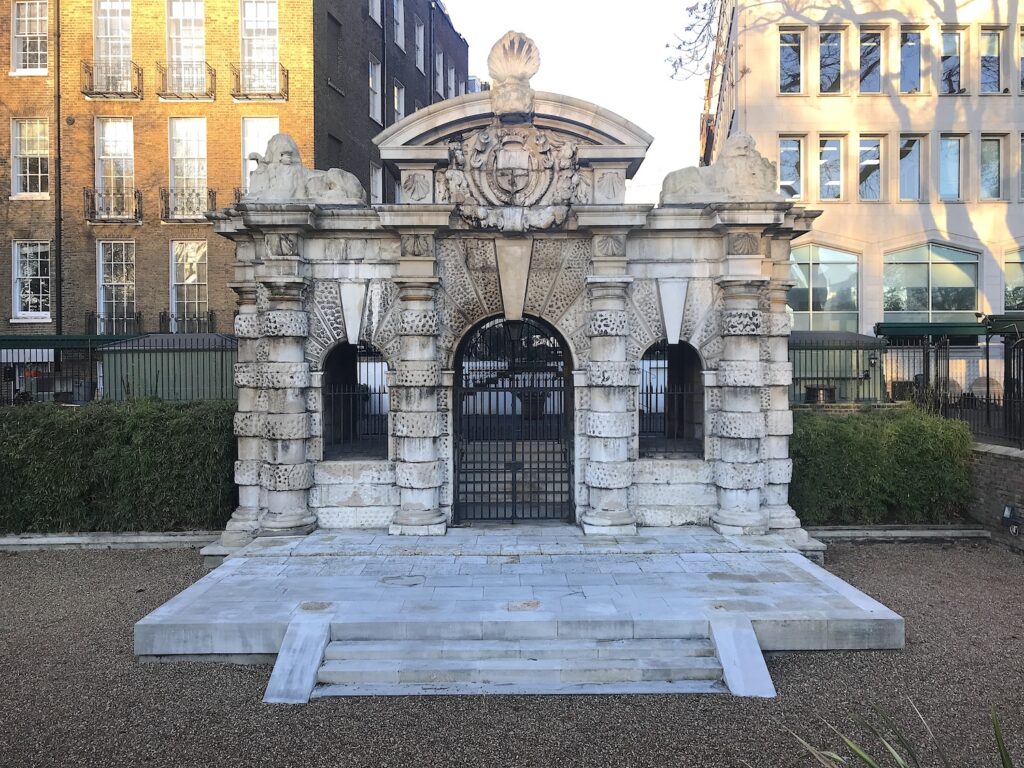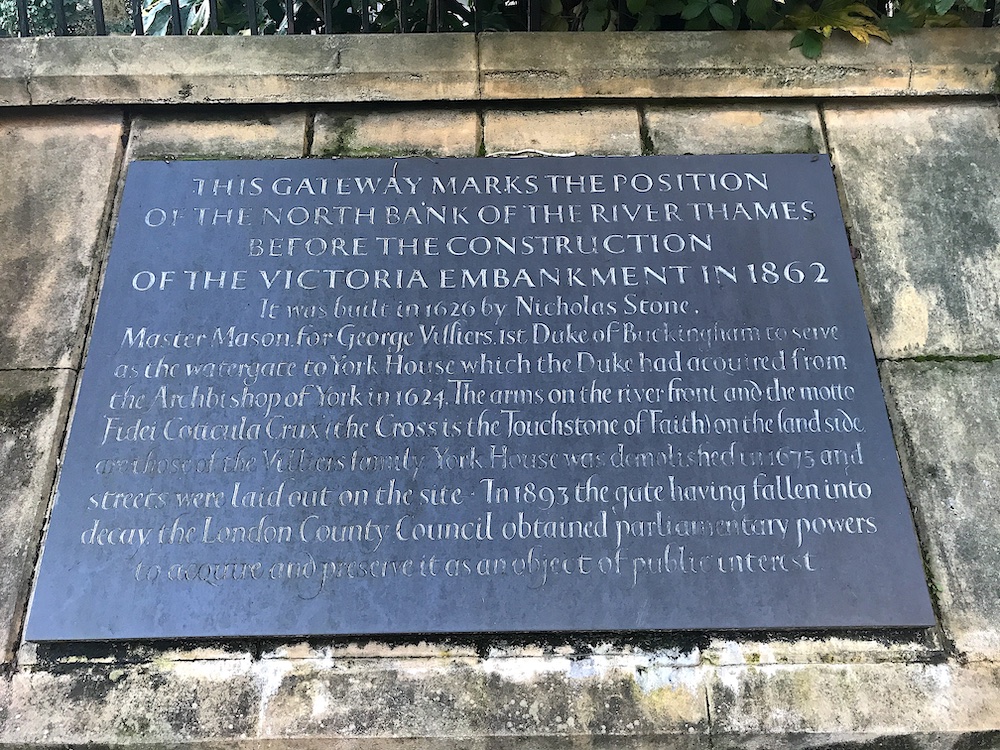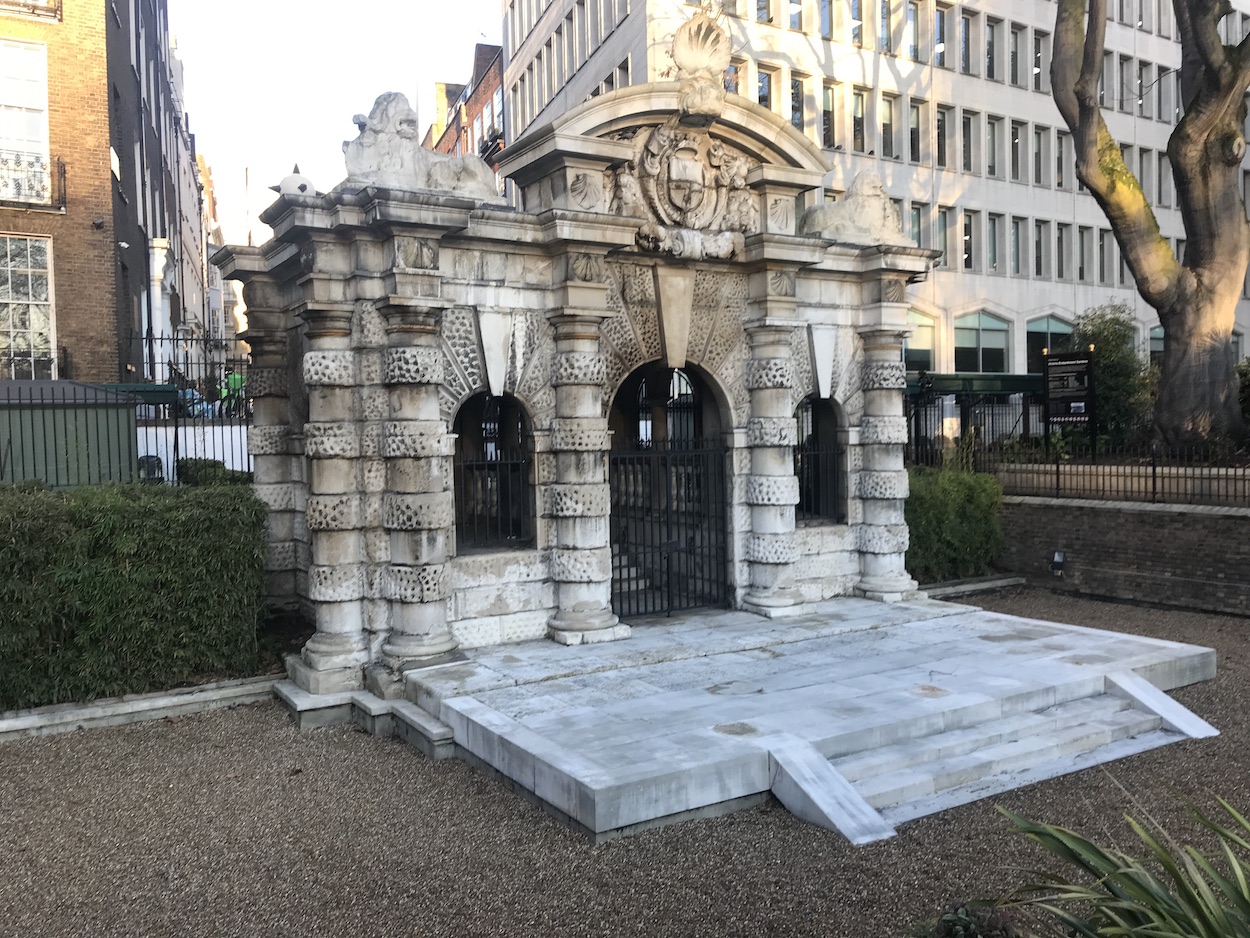
When Joseph Bazalgette created his marvellous (and still used) sewer system the 1860s, he pushed back the banks of the Thames and buried his main ‘Low Level’ pipes in the reclaimed land. This is now The Embankment, ground that throughout history was subject to the twice-daily wash of the tides, now parks, roads and the riverside pavement. This reclamation of land from the river led to a couple of foreshore constructions to be landlocked.
Exhibit 1 is the great archway entrance to Somerset House. Now a glass fronted doorway facing the road and the river it was, until Bazalgette, an open arch, through which boats could be rowed to deposit their occupants into the heart of the complex.
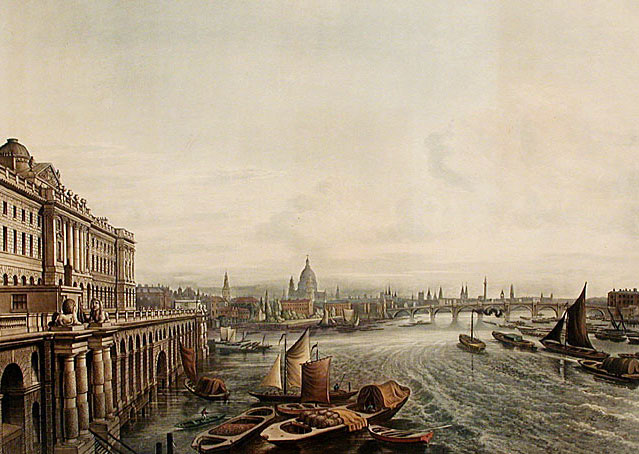
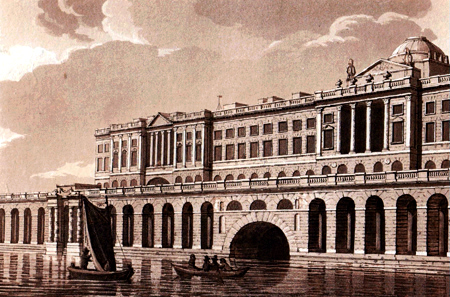
A few hundred metres upriver, in the public park called Embankment Gardens, is another entrance, but where Somerset House remains and its riverine arch has been repurposed, the York House Watergate is an orphan, the grand house to which it once gave entry long since gone.
The London home of the Archbishops of York from the 1550s (and before that, called Norfolk House), York House was one of more than dozen grand houses along the Strand (the high causeway linking the City with Westminster). Each had ground coming down to the foreshore, with impressive watergates to receive visitors – it being easier and more comfortable to travel by water than by coach along the London roads.
In the 1620s George Villiers, the 1st Duke of Buckingham, acquired York House, and it was he who commissioned the gate’s construction. Historically, it was said that the architect was Inigo Jones (responsible for, inter alia, Banqueting House, the Queens’ House in Greenwich, and St Paul’s Church in Covent Garden Piazza), but some sources acknowledge it as the work of master mason Nicholas Stone. Whichever, it is one of the few remaining examples of Italianate style early Jacobean architecture in the capital.
Villiers is rumoured to have been a lover of James I; he was certainly a ‘favourite’ and his career and titles were enhanced by the relationship. However, his extravagance, incompetence as a military leader and diplomat, and his arrogance, made him deeply unpopular among the Court and the public, so much so that, when he was assassinated in 1628, his murderer was acclaimed a hero by many.
The title – and York House – passed to Villiers’ son, also George, who sold the property and land in 1672, upon which the modern day streets are laid out. It is said that one of the stipulations of the sale was that all elements of Villiers’ name were to be commemorated in the name of the streets – George Street, Villiers Street, Duke Street, Buckingham Street and ‘Of Alley’, this last of which is now called York Place.
